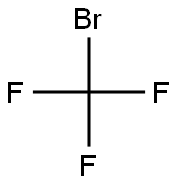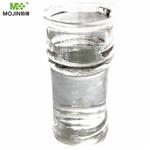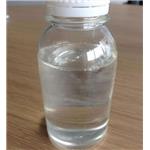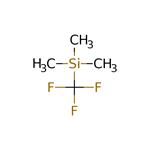Chemical Properties
(Trifluoromethyl)trimethylsilane (TMSCF3) is a flammable colorless liquid with a boiling point of 54–55 °C, a flash point of –17 °C and density of 0.926 g/mL at 20 °C. It is a trifluoromethylation reagent used in nucleophilic addition reactions of aldehydes and ketones. It may be harmful if inhaled, swallowed, absorbed through skin and may cause respiratory tract, skin and eye irritation. TMSCF3 was firstly synthesized by Rupert in 1984 via the condensation reaction of CF3Br and TMSCl with (Et2N)3P.
Uses
Silicon-based fluorinating reagents for the efficient trifluoromethylation of carbonyls and ethylene diamines. Precursors used for metal-mediated trifluoromethylation of aromatic, heteroaromatic, vinyl substrates, etc.
Uses
TMSCF3 is versatile reagent for trifluoromethylation, such as transition-metal-catalyzed reaction, miscellaneous trifluoromethylation, and addition to carbonyl and imine groups. These reactions are extremely useful approaches in the pharmaceutical and agrochemical industry, because they enhance metabolic stability (metabolic blocking) and alter the compound properties (liphophilicity, binding selectivity).
Preparation
(Trifluoromethyl)trimethylsilane is prepared from trimethylsilyl chloride and bromotrifluoromethane in the presence of a phosphorus(III) reagent that serves as a halogen acceptor.
General Description
Trimethyl(trifluoromethyl)silane (TMSCF
3) is also called as Ruppert-Prakash fluorination reagent. It is extensively used for the synthesis of trifluoromethyl-containing compounds.
reaction suitability
reaction type: C-C Bond Formation
Toxicology
(Trifluoromethyl)trimethylsilane is classified as toxic and requires careful handling and safety protocols to minimize human exposure. Prolonged or repeated exposure can lead to various health problems such as skin, eye, and respiratory irritation.
Purification Methods
Purify it by distilling it from trap to trap in a vacuum of 20mm using a bath at 45o and Dry-ice/Me2CO bath for the trap. The liquid in the trap is then washed with ice cold H2O (3x), the top layer is collected, dried (Na2SO4), and the liquid is decanted and fractionated through a helices-packed column at atmospheric pressure. 1H, 1 3C, 1 9F, and 2 9Si NMR can be used for assessing the purity of fractions. [Ruppert et al. Tetrahedron Lett 25 2195 1984, Krishnamurti et al. J Org Chem 56 984 199, Beilstein 4 IV 3892.]






